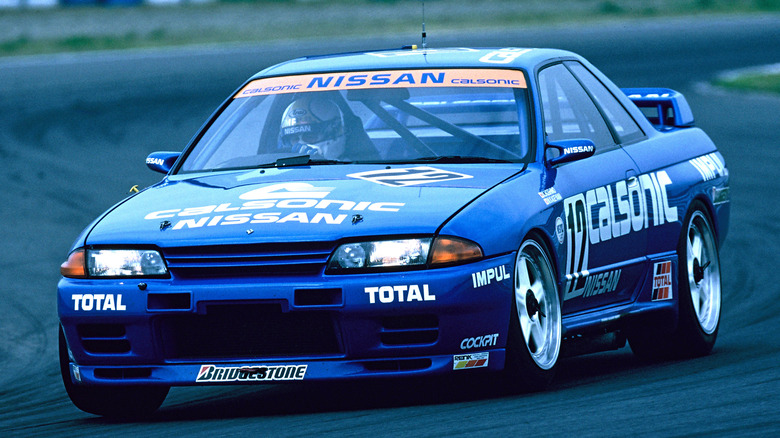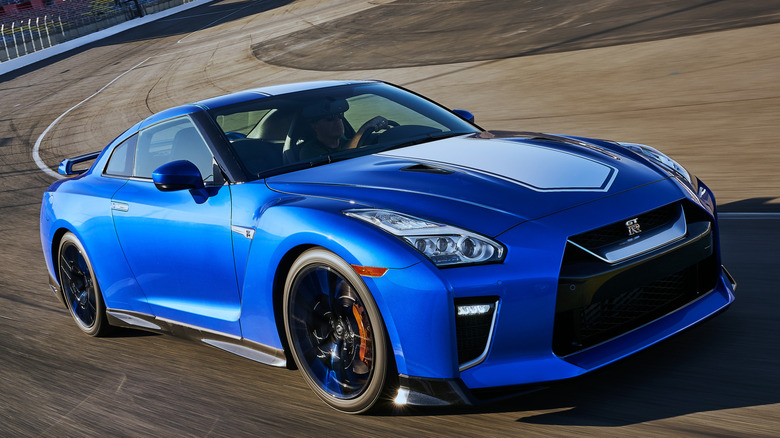Why Did Nissan Drop The Skyline Name From The Latest GT-R Generation?
The Skyline name has been a part of Japanese motorsports history since the nameplate itself belonged to the Prince Motor Company, which would later merge with Nissan. A key race at the Suzuka track in 1964 cemented the reputation of the Skyline. The cars entered into this race were sedan-based Skyline GT models, which had been stretched by 20 centimeters and fitted with a triple-carbureted inline six engine. Since the Skyline's impressive performance that day, its status as a JDM icon has only grown.
The Skyline name became an important part of Nissan's motorsports legacy. After Prince merged with Nissan, the first high-performance Skyline GT-R model ran from 1969 to 1972, replaced by the next generation for 1973 only. It disappeared until 1989, when the famed R32 Skyline GT-R burst onto the scene with all-wheel-drive and 280 horsepower. While the R32 Skyline GT-R never came to the U.S., it became a legend in the JDM, followed by the R33 and R34 versions.
The R35 GT-R, which debuted in 2008, dropped the Skyline name and, becoming known simply as the Nissan GT-R. This is primarily because of changes made to the vehicle's platform, engine, and market positioning. The Skyline name is still used for certain sedans in Nissan and Infiniti's garage, while the GT-R nameplate continued the high-performance legacy.
The Skyline and GT-R became too different from each other
The R35 Nissan GT-R was a major departure from its R34 predecessor. Instead of being a sedan-based platform variant with a high-performance engine, all-wheel-drive, and suspension upgrades like its predecessors, the R35 GT-R was built on its own dedicated platform. The PM ((premium-midship) chassis on the R35 GT-R uses an all-wheel-drive system that incorporates an independent transaxle. The engine's power goes directly to the transaxle via a carbon-fiber driveshaft, where it is then distributed to both the front and rear wheels. This layout aids both weight distribution and acceleration.
This generation of the Nissan GT-R had an engine that was also very different from its Skyline ancestors upon release. Instead of the Skyline's cast-iron inline-six, the it used a 3.8-liter aluminum V6. Performance-enhancing technologies used included integration of the turbochargers into the exhaust manifolds for weight reduction and heat retention, and plasma-deposited cylinder lining to reduce friction. The initial 2008 edition of the GT-R produced 480 horsepower, while the outgoing 2024 discontinued model of the Nissan GT-R raised its output to 565 hp, with the NISMO version breaking 600 hp.
Finally, there was the R35 Nissan GT-R's market positioning. No longer a hot-rodded version of a pedestrian sedan, the R35 GT-R demanded its own line separate from the much tamer Skyline.

